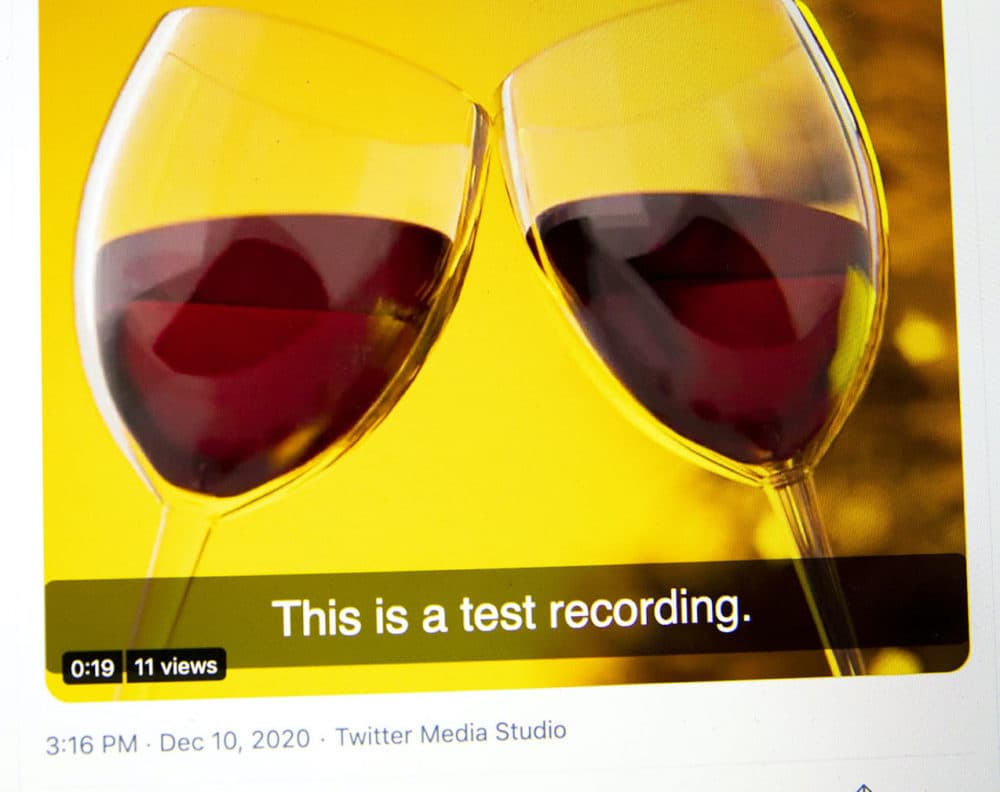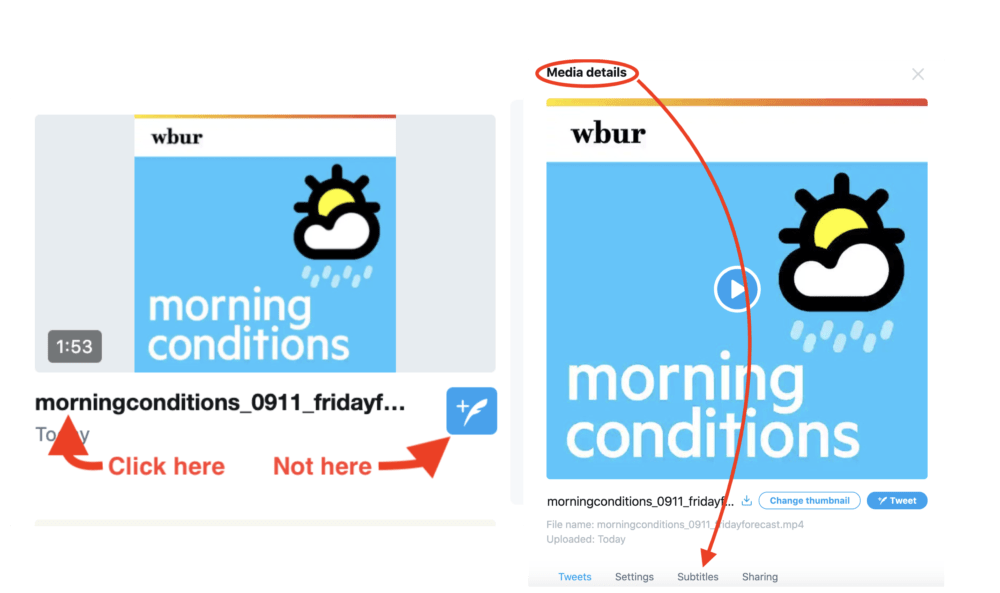Advertisement
A Quick Guide To Creating Captions For Twitter Videos

About a year and a half ago, Twitter announced that closed captions could be added to Twitter videos. It was a big win for accessibility advocates, as well as those of us in public radio who want short spoken-word files to play inside of Twitter.
Since there's no native audio player in Twitter, they have to be displayed as video, often with a single, static image. And since volume is turned off by default, captions really help users engage with this audio.
Now, the process of adding captions is relatively simple. Unfortunately, there are some serious gotchas involved. Fortunately, I am here to guide you through them.
Upload Your Video
This is the easiest step. Go to the Twitter Media Studio. Though be warned: Not every Twitter account has access to Media Studio. (According to this page: "Currently, access to Media Studio is given on an invite-only basis. If you do not have access to Media Studio, please reach out to your account manager.")
Then click the Upload Media button in the upper right-hand corner. Follow the directions. Just be sure that it is no longer than 2:20! That is a hard limit for Twitter. (Though according to this page: "Certain advertisers may qualify for whitelisting for longer video uploads.")
Create A Transcript
You now need a text file of the actual words to your audio/video, and in the proper format (SubRip, aka .srt). You could create one by hand, but you'll quickly find that to be painstaking and unrewarding — especially since there are already a number of automated speech-to-text services that are relatively inexpensive, lightning-fast and surprisingly accurate.
Trint, for example, is very popular in newsrooms, and it allows you to export the results as an .srt file. We use Amazon Transcribe, because it's already integrated with other AWS tools like s3 and AWS CLI. On the downside, the end results come out in a proprietary Amazon format. So you'll need an extra tool to turn Amazon Transcribe JSON into an .srt file.
Double-Check Your SubRip File
SubRip files are simple, intuitive, human-readable text files. You can open them in any text editor. And they look something like this:
1
00:00:00,000 --> 00:00:02,410
I'm meteorologist Dave Epstein, with the Greater Boston area
2
00:00:02,410 --> 00:00:05,310
forecast it's Tuesday, September 1.
3
00:00:05,680 --> 00:00:08,250
Wow, Here we are, September 1st, the beginning of
That being said, Twitter can reject your file with a less-than-helpful message of: "There was a problem uploading your subtitle (.srt) file." So it's important, at least when you first start, to review and troubleshoot your .srt file, to save yourself hassle down the road.
- Are the captions in the proper order?
- Are there any stray characters in the file?
- Most important, each fraction of a second should be represented by three digits, even if your original file format only went to one or two places. Twitter will reject your file without those three digits, so pad your times out with zeros, even if, technically, they are not needed. And make sure you use a comma, rather than a decimal point.
If you're looking for a more specialized tool, I recommend trying out Aegisub, which is billed as "a free, cross-platform open source tool for creating and modifying subtitles."
Understand The Terminology
Here's the basic breakdown:
- Closed captions provide an on-screen transcription of the video's dialogue, for when the sound is off, or for the hearing impaired.
- Open captions are very similar to closed captions, but they can't be toggled on and off. They are actually part of the video, or "burned in."
- Subtitles provide an on-screen transcription when the dialogue is not understood by the viewer. Think artsy French movies. Think translation.
Unfortunately, Twitter insists on referring to its closed captions as "subtitles," and is fairly unapologetic about it: "Subtitles, as we’re defining them, are transcripts of a video’s dialogue or audio contained in .SRT files that are attached to videos." It's not a federal crime, but it does muddy the waters. So remember, when you're Googling for help about Twitter closed captions, try: "Twitter subtitles."
Upload Your .srt File
Now you can upload your .srt file. Though, that might not be entirely intuitive. Click on the file name. You want the Subtitles tab of the "Media details" modal window.

Tweet And Test
Now you can just tweet out the video. However, you might not immediately see the captions. First, for unknown reasons, captions don't appear in the desktop web version of Twitter, if you are logged in. (They show up fine on mobile.) So while on a desktop, you'll either need to log out of Twitter or open the tweet in an incognito window. Second, make sure that you have toggled on the closed caption [CC] button in the video.
One last note, if you notice any mistakes in the captions, fret not. You can edit your .srt file and re-upload it, even if you've already tweeted out the video.
